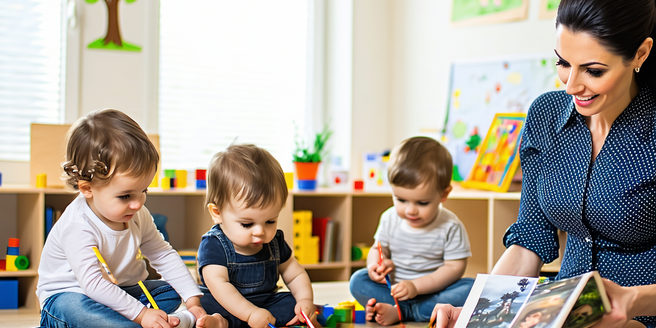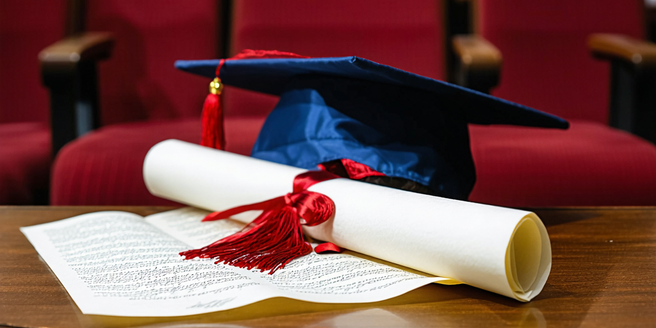
Understanding School Transition Phases
| Phase | Description | Challenges |
| Preschool to Kindergarten | Introduces basic structure and routine. | Separation anxiety, new environment. |
| Kindergarten to Primary | Focuses on foundational skills. | Adjusting to formal education. |
| Primary to Middle School | Greater academic expectations. | Social dynamics, increased workload. |
| Middle to High School | Preparation for independence. | Balancing academics and social life. |
| High School to College | Focus on self-directed learning. | Handling autonomy, responsibilities. |
Building Emotional Resilience in Children
Building emotional resilience in children is crucial for their development through school transitions. By fostering resilience, children can better manage stress and adapt to new situations they encounter in school. Encourage children to express their emotions openly which helps them understand and deal with various feelings. Parents can model resilient behavior by showing flexibility and positivity in challenging situations. It’s also beneficial to praise children for their efforts rather than focusing solely on outcomes, as this boosts their confidence in facing difficulties. Peer support plays a significant role in emotional resilience, so facilitating healthy friendships is important. Providing them with problem-solving tools empowers them to overcome obstacles on their own. Emotional resilience is a skill that continues to grow with guidance and practice, making it an essential part of their journey through school and life.
Creating a Supportive Home Environment
Creating a supportive home environment is fundamental for children’s successful school transitions. A nurturing environment enables kids to feel secure and valued, which boosts their confidence during school changes. It’s essential to maintain an open line of communication where children feel heard and respected. A predictable daily routine helps to create structure, providing stability amidst new school demands. Supporting children’s educational endeavors by engaging with their school activities shows a cooperative interest in their education. Designating a quiet study space at home allows children to focus and develop a regular study habit. Celebrating small successes and providing constructive feedback helps to motivate children in their academic pursuits. In a supportive home, children learn to trust their abilities, making their adjustment to school transitions smoother and more positive.
Effective Communication Strategies with Kids
Effective communication strategies with kids are essential for facilitating smooth school transitions. Clear and open communication helps children express their thoughts and concerns, making them feel understood and supported. Active listening skills are crucial; giving full attention when children talk ensures they feel valued. Using age-appropriate language is important for children’s understanding, and asking open-ended questions encourages conversations. Empathy plays a significant role in communication by validating children’s feelings and reinforcing emotional security. Regular family discussions about school experiences can provide opportunities for children to share their successes and challenges. Setting aside dedicated time for family talks reinforces the importance of communication. Effective communication builds a trustworthy relationship where children feel safe to reach out for guidance, helping ease their adjustment during transitional periods.
Establishing Routine and Structure at Home
Establishing routine and structure at home is vital for easing school transitions in children. Consistent daily routines provide a sense of security and predictability, which can alleviate anxiety associated with changes in their school environment. Having defined times for activities such as homework, meals, and bedtime creates a harmonious balance between school responsibilities and relaxing downtime. Consistent morning routines help in smoother departures for school, lowering stress for both parents and children. Involving children in planning their routines can increase their engagement and cooperation, as they take ownership of their schedules. Flexibility is also essential to accommodate unforeseen events without causing significant disruptions to the routine. Overall, structured environments empower children to manage their time effectively, promoting successful adaptation to new school settings.
Encouraging Social Skills Development
Encouraging social skills development is a key aspect of preparing children for school transitions. Strong social skills enhance children’s ability to build positive relationships, manage conflicts, and collaborate in group settings. Engaging in imaginary play and group activities at home fosters interaction and helps children learn to share, cooperate, and negotiate with peers. Parents can facilitate social growth by arranging playdates or extracurricular activities that align with children’s interests, encouraging broader social engagement. Discussing social scenarios, teaching empathy, and role-playing can help children understand various social cues and perspectives. Praising children for good social interactions and demonstrating appropriate responses to social situations also aids in developing their interpersonal skills. As children become more socially adept, they are better equipped to navigate new social dynamics encountered during school transitions.
Introducing Academic Concepts Early
Introducing academic concepts early is beneficial in preparing children for future school transitions. Familiarizing children with foundational ready skills like numbers, letters, and basic science concepts before they enter formal schooling can boost their academic confidence. Parents can introduce these concepts through playful activities, reading sessions, and educational games that inspire curiosity and learning. Creating opportunities for children to ask questions and explore answers nurtures intellectual engagement. Visits to museums or engaging in simple craft projects at home can turn into spontaneous learning moments. It’s important to maintain a balance where learning remains fun and stress-free, to promote a positive attitude towards education. By developing an early interest in academic concepts, children can adjust more smoothly to the curricula and expectations they encounter in new school environments.
Collaborating With Teachers and Educators
Collaborating with teachers and educators plays a crucial role in supporting children through school transitions. Establishing a partnership with school staff provides a comprehensive support system for children, aligning efforts to meet their educational needs effectively. Open communication with teachers allows parents to monitor their child’s progress and address concerns promptly. Attending school events, parent-teacher meetings, and volunteering in school activities can demonstrate involvement and commitment to children’s education. Sharing insights about a child’s learning style or behavioral tendencies can enable teachers to tailor their approach to better support the child. Educators often provide valuable resources and strategies for reinforcing learning at home. By working collaboratively with teachers, parents can reinforce a sense of belonging and encouragement for children as they adapt to new school settings.
Managing Anxiety and Expectations
Managing anxiety and expectations is critical during school transitions for children. School changes can induce anxiety due to the uncertainty of new environments, peers, and routines. Identifying signs of anxiety early allows parents to address it constructively. Open discussions about school experiences provide an outlet for expressing worries, fostering reassurance. Setting realistic academic and social expectations helps to alleviate pressure, promoting a balanced approach to school life. Encouraging stress-relieving activities like sports, art, or meditation can enhance children’s wellbeing. Providing strategies to handle stressful situations, such as deep breathing or hitting pause, empowers children to manage anxiety independently. Celebrating successes, however small, can build optimism and reduce anxious feelings. With supportive guidance, children can learn to manage anxiety effectively, paving the way for a smoother transition into new school challenges.
Celebrating Milestones and Progress
Celebrating milestones and progress is an inspiring way to support children through school transitions. Recognizing achievements, whether academic or personal, reinforces a positive mindset and motivates continued effort. Celebrations can range from simple verbal praise to small rewards or family gatherings, emphasizing the significance of reaching set goals. Reflection on milestones achieved encourages children to appreciate their growth over time, building self-awareness. Progress doesn’t always manifest as noticeable achievement; recognizing efforts and determination also plays a role in fostering confidence. Sharing milestones with extended family or educators helps children feel supported by their community. Celebrating progress instills a sense of pride and accomplishment, making the journey through school transitions engaging and rewarding. It assures children that their efforts are valued and encourages them to continue striving towards their goals.

